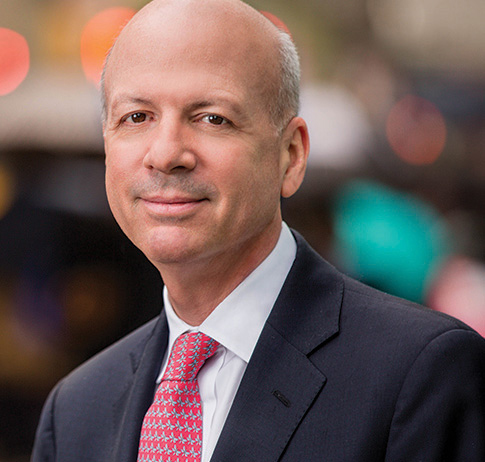M. Ridgway Barker co-authored this article with Joseph Bambara, CIPP/US.
The regulation of cryptocurrency has been a point of interest lately for U.S. lawmakers. The $1 trillion infrastructure bill H. R. 3684, which includes provisions for crypto regulation, passed the Senate. The developing U.S. cryptocurrency regulation will address: stopping cryptocurrency crime and tax evasion, stablecoin regulation, and investment vehicles, e.g., cryptocurrency ETFs.
One such newly proposed cryptocurrency regulation is included as a provision of the $1 trillion bipartisan infrastructure bill moving through Congress. The provision: SEC. 80603. INFORMATION REPORTING FOR BROKERS AND DIGITAL ASSETS would expand the definition of a brokerage to include companies that facilitate digital asset trades like cryptocurrency exchanges. The change would mean increased tax reporting responsibility to facilitate the IRS’s ability to track crypto tax evasion. The provision SEC. 80603 is a “Pay For” provision in TITLE VI called Other Provisions. Other Provisions tries to detail how the bill will pay for itself. Congress believes it will raise $28 billion in new revenue through expanded reporting requirements for any cryptocurrency firm deemed a “broker” and changing how the IRS taxes “digital assets.” These provisions have been described as tightening the laws around taxing digital asset sales. Unfortunately, it is not a well-thought-out way to help pay for the larger bill. While we do agree that digital asset exchanges and brokers should have reporting requirements, and those that earn should pay their capital gains taxes. The bill incorrectly expands the definition of a broker to “any person who (for consideration) regularly provides any service responsible for effectuating transfers of digital assets, including any decentralized exchange or peer-to-peer marketplace.” That would virtually include every player in the industry, from miners and validators to software developers and node operators. This provision reveals a fundamental misunderstanding of how distributed ledger technology (“DLT”) works and how best to regulate it. Let’s consider three types of DLT players: miners, validators, and decentralized exchanges.
Miners verify transactions via a consensus method know as proof-of-work (“POW”). It, as most know, requires a large amount of computing power provided by the miners to verify a transaction. In exchange, the miners are compensated with cryptocurrency. In 2021, the reward per block was 6.25 bitcoins for bitcoin miners, and one bitcoin is worth around $45,000 at publication. But miners have nothing to do with the actual onboarding of buyers and sellers or the transactions executed between them. They do not store the identities of participant buyers and sellers.
Validators use a different consensus method to confirm transactions. It is known as proof of stake (“POS”). Here parties anonymously stake platform tokens, i.e., assets, to support transaction validation and maintain the network platform by running less expensively than a POW platform. The number of tokens the party’s stake determines the number of transactions they get to validate. They are compensated for each transaction they validate. Here again, they do not know nor store the identities of participant buyers and sellers. Please see our article on staking HERE.
As for exchanges, traditional centralized cryptocurrency brokers and exchanges such as Coinbase should comply with new reporting laws approved by Congress. But increasingly, these exchanges, e.g., Uniswap, have become decentralized exchanges. A decentralized exchange (DEX) is an exchange that operates based on a distributed ledger. It doesn’t store user funds and personal data on its servers and acts only as a platform for matching bids to buy or sell user assets. Trading on such platforms takes place directly between participants (peer-to-peer) without any financial intermediaries. As such, there is no central authority to identify and report individual transactions on the network. On the contrary, a combination of algorithms, mathematics, cryptography, and software performs all the functions of a financial intermediary but in a transparent, decentralized, and auditable manner.
So how do we proceed? There are several ways that we can begin to properly address digital assets, DLT, and the new Internet of Value. Lawmakers in the House must find a way to amend the bill SEC. 80603 before passing the omnibus infrastructure bill H. R. 3684. Sen. Pat Toomey (R-Pa.) explained which players are brokers and why an amendment is a sensible way of proceeding: “We are not proposing anything sweeping or anything radical…[A] broker means only those persons who conduct transactions on exchanges where consumers buy, sell, and trade digital assets.”. The House needs to develop more precise language that sets up more reasonable regulation and taxation. We need an educational campaign for all state and federal lawmakers to understand this new DLT/blockchain and its many new applications. To properly develop policy around digital assets and DLT/blockchain, we especially need vigorous discussion engaging all stakeholders and covering the many interconnected elements in regulating the second era of the digital age. This is a pivotal moment in the development of DLT/blockchain technologies that hold so much potential for effecting positive change to supply chains, health care, education, and virtually every aspect of banking and financial services. We can’t allow poorly conceived laws and regulations to have a chilling effect on the whole industry and ultimately derail the development of America’s innovation economy.
Our Withers attorneys can assist and educate clients from a legal and technical standpoint to incorporate these emerging technology trends safely and efficiently to help your businesses stay ahead of the competition. Please contact your regular Withers attorney or the author of this piece with any questions.

